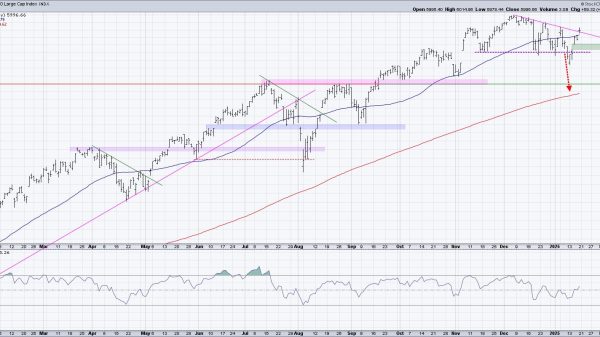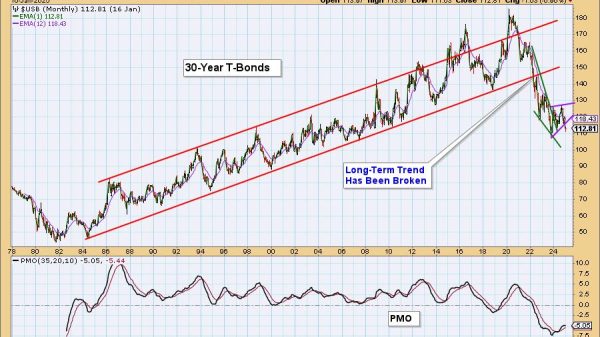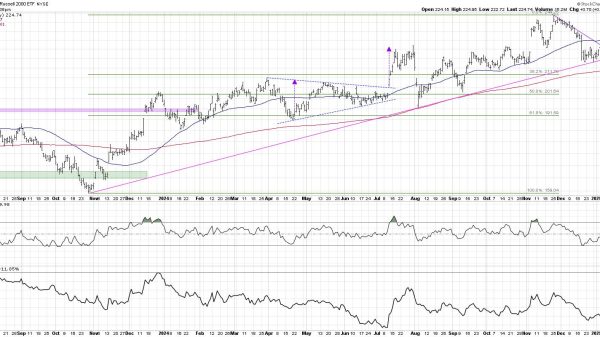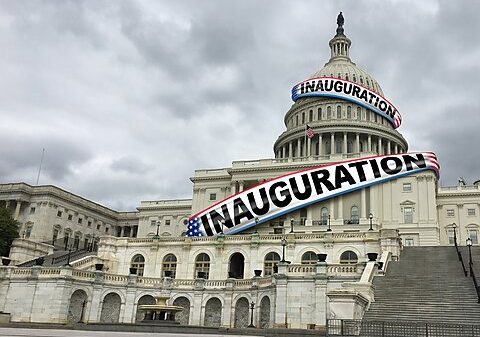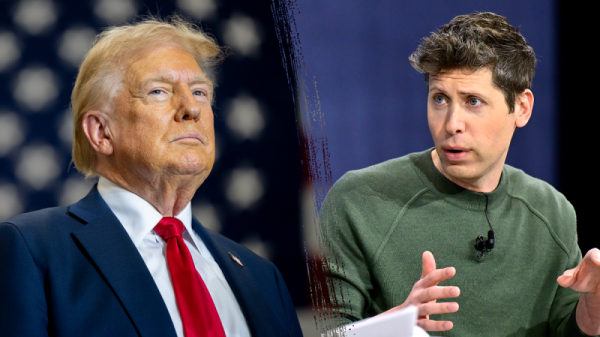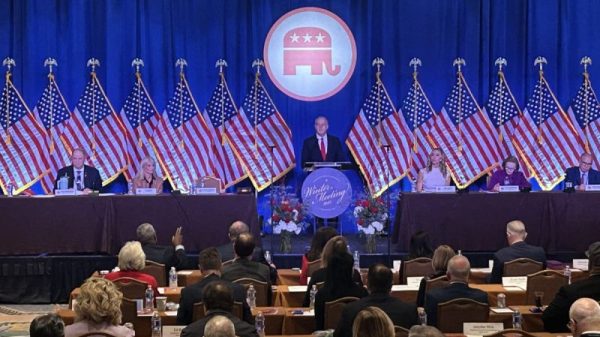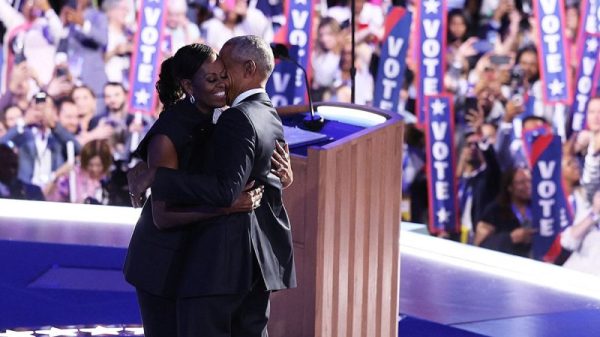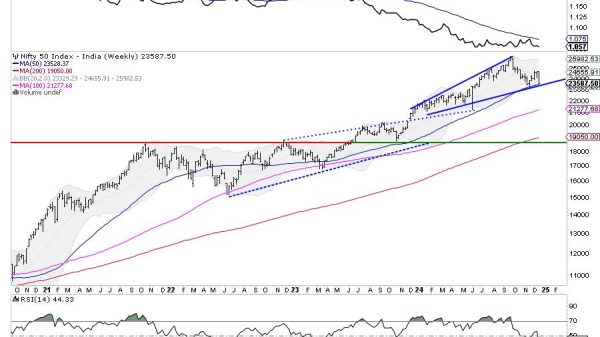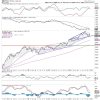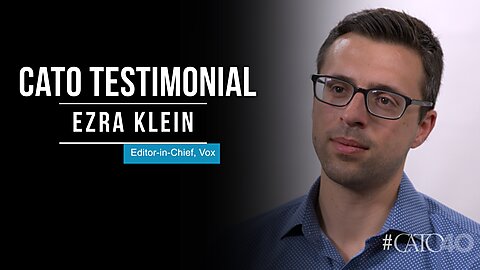The evidence in Argentina already shows that relaxing controls leads to a massive influx of dollars into the banking system, as would occur under an official dollarization process (whereby a government grants the dollar legal tender or simply allows its use under the free competition of currencies). And yet the currency clamp remains.
Though not explicit, the Milei government seems keen to avoid the experience of former President Mauricio Macri (2015–2019). During his government, a rapid removal of many—but not all—currency and capital controls was combined with deficit spending, which was financed with sovereign debt.
The experiment failed: facing capital flight and an imminent debt default in 2018, Macri turned to the IMF for a USD $57 billion loan, the largest in the fund’s history. In 2019, annual inflation rose beyond 50 percent. When it became clear that Macri would lose that year’s election to Alberto Fernández, a Peronist candidate, capital flight intensified and the currency depreciated by 25 percent against the dollar in a single day. The central bank responded by using USD $13 billion in reserves to defend the peso. Macri then reintroduced a strict version of the currency clamp.
Milei is carrying out the opposite approach: fiscal discipline from day one was combined with a cautious, interventionist exchange rate policy. The strategy has worked thus far and there are expectations of the clamp’s gradual unwinding. But the cost is the current currency lag.
That is, the exchange rate remains controlled, yet consumer prices have risen at a higher rate than the official rate of devaluation. At 2.4 percent, Argentina’s monthly inflation reached a multi-year low, yet the level is still greater than the 2 percent crawling peg, the rate at which the government officially devalues the peso each month. When the rate of devaluation does not match the rate at which consumer prices rise, the local currency can become overvalued.
According to The Economist’s Big Mac Index, which measures relative purchasing power parity in different currencies, the peso was 15 percent overvalued vis-à-vis the dollar in June 2024, when the implied exchange rate was ARS $1,072, while the official rate stood at ARS $931. But this was the “raw index” spread, which merely accounts for the disparity between the local currency and the dollar. According to the GDP-adjusted index, which considers relative income levels in Argentina and the United States—and, as such, “may be a better guide to the current fair value of a currency” — the peso was 47 percent overvalued against the dollar in June (roughly the level of the spread between the blue and official dollars).
The peso’s overvaluation in the Big Mac index was the highest since 2011, the year when former leftist President Cristina Kirchner (2007–2015) hardened the existing currency controls and introduced many of the clamp’s current elements.
GDP-Adjusted Value of Argentine Peso vs. U.S. Dollar (2011–2024)
Source: The Economist Big Mac Index. Periods of overvaluation (blue) and undervaluation (red) are measured every six months (June and December).
What has happened after previous cases of peso overvaluation? Just in the last 15 years, periods of overvaluation above 25 percent (in GDP-adjusted terms) have been followed by a crash in the Argentine currency, with a swing of at least 45 percent and as much as 117 percent toward peak devaluation. Granted, past conditions were not the same as today’s, especially in terms of the Milei government’s strict fiscal stance and, more recently, its zero-emission monetary policy. But, at the very least, historical precedent should give room for thought.
In a recent podcast interview, Milei downplayed the peso overvaluation argument by stating that nobody can determine what the proper price of the dollar should be. This is correct, which begs the question of why the government maintains the official exchange rate and the currency clamp in the first place.
In a similar vein, economist Ramiro Castiñeira argues that a currency lag only applies when there is an active, political attempt to prop up the official exchange rate while the black-market rate spirals out of control, which is not the current case in Argentina. Today, he adds, “the currency spread is collapsing without the sale of reserves or the issuing of foreign debt, and even while interest rates are decreasing so as to not favor the carry trade.”
While these are good points, one should point to recent interventionism in the currency market and to the crawling peg as the carry trade’s main catalyst. There is also the fact that, despite the official fall in inflation, which is measured in pesos, Argentina remains objectively expensive compared to much of the world in strict dollar terms.
As Ambrose Evans-Pritchard writes in The Daily Telegraph, “it costs almost twice as much to buy a hamburger in Buenos Aires as it does in Tokyo, even though the pampas are full of cattle, while the rice terraces of Japan are not.”
On the other hand, when it comes to imported goods such as clothing, extensive trade barriers beyond the reach of the currency clamp also drive up prices in Argentina. According to a recent study by Fundar, a research center that analyzed 2024 data in absolute terms, “a basket of clothing in Argentina is 35% more expensive at the official dollar rate than the average for the same basket in other countries in the region.”
So is there a currency lag in Argentina after all? There is according to the central bank’s website. Since the currency-clamp-induced dollar scarcity limits importers’ ability to pay for the products they eventually sell to the public, the central bank began to issue inflation-proof bonds that would allow importers to pay their debts abroad:
BOPREAL stands for Bond for the Reconstruction of a Free Argentina in Spanish. BOPREALs are US dollar-denominated securities issued by the BCRA for importers with overdue debts for goods with customs registration and/or services actually rendered until December 12, 2023.
BOPREALs offer a transparent, orderly, non-discriminatory and effective solution to the historical growth of commercial debts abroad triggered by a foreign exchange delay and the ensuing lack of foreign currency, which makes it impossible to meet obligations immediately. (Emphasis added)
Bopreal bonds are a complex, short-term means to counter the adverse results of Argentina’s self-imposed currency market complexity.
Dismantling the currency clamp would undo such complexity and restore freedom to the currency markets, but the government believes that a rapid rise in inflation would follow. Herein lies a crucial contradiction. If the government’s premise is correct, then the recent fall in inflation is not due solely to fiscal surpluses, deregulation, or an extremely restrictive monetary regime, but rather also to the systematic repression of the currency. Whether correct or not, the government’s thesis is an implicit recognition of a serious currency lag.
The government says it will phase out the currency clamp in 2025. However, it has not provided a timeline for its plan beyond the stated prerequisites of an increase in the central bank’s reserves, a convergence between the inflation rate and the crawling peg, and a rise in the demand for pesos.
There is also an unstated yet highly likely political motivation for the government’s delay: the government does not want to risk a sudden freefall in the peso’s value, with a corresponding rise in inflation, before the congressional elections in October 2025, when Milei will have the chance to improve his party’s standing from its current, small minority to a significant majority. As the president argues, politics is a zero-sum game; if his party does not wield power, then the statist Peronists will do so once again.
Certainly, the political angle is not to be brushed aside. But there are also risks to keeping the clamp in place for months on end, a policy that necessarily pits the central bank’s fonctionnaires against the currency markets’ free and often wild forces. On the other hand, lifting currency controls properly could have the opposite effect of what the government fears, with a net inflow of dollars into a country that is increasingly attractive to investors abroad.
Much as Buenos Aires Governor Dardo Rocha undid the original cepo in the 1880’s, President Milei should end Argentina’s currency clamp once and for all.

